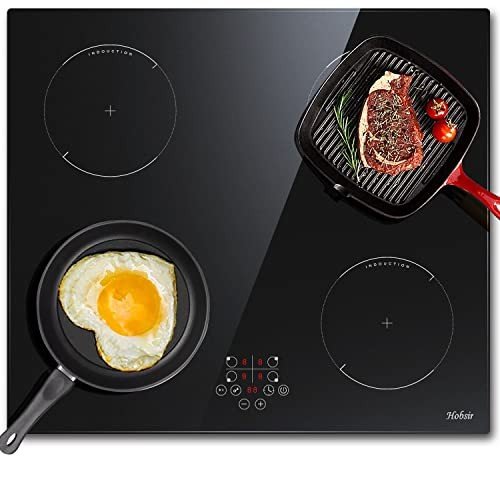Understanding Ovens and Hobs: A Comprehensive Guide
Cooking has come a long way given that the days of open flames and fundamental cooking techniques. Today, ovens and hobs are at the heart of contemporary kitchens, supplying versatility, performance, and a variety of cooking choices. Whether you are a newbie cook or a skilled chef, understanding the distinctions, functions, and functions of these home appliances is essential for making the most of cooking potential. Ovens & Hobs breaks down the numerous types of ovens and hobs offered on the market, their functionalities, and how to pick the ideal devices for your kitchen.
What is an Oven?
An oven is an enclosed area created for heating and cooking food, offering numerous techniques such as baking, roasting, and broiling. Ovens can be found in numerous types, each serving distinct cooking choices and requirements.
Kinds of Ovens
Conventional Ovens:
- Use gas or electrical power for heating.
- Usually include a heating aspect at the top and bottom.
- Ideal for basic baking tasks.
Convection Ovens:
- Use a fan to flow hot air, promoting even cooking.
- Ideal for baking, roasting, and reheating.
- Minimizes cooking time and improves taste.
Steam Ovens:
- Utilize steam to prepare food while maintaining wetness and nutrients.
- Outstanding for health-conscious cooking, such as veggies and fish.
Microwave Ovens:
- Use electromagnetic radiation to heat food quickly.
- Best for reheating leftovers or cooking basic meals.
Wall Ovens:
- Built into the wall, saving area in the kitchen.
- Available in numerous configurations, including single or double ovens.
Secret Features of Ovens
- Temperature level Control: Precision heating for numerous baking and preparing procedures.
- Self-Cleaning Options: Some models have self-cleaning modes that utilize high temperatures to burn food residue.
- Smart Features: Wi-Fi connectivity permits remote pre-heating, tracking, and dish management via mobile phones.
What is a Hob?
A hob is a cooking surface, frequently described as a stove or cooktop, where cookware is put for heating. Hobs are offered in various products, sizes, and heating techniques, catering to diverse cooking needs.
Types of Hobs
Gas Hobs:
- Utilize gas burners for direct flame cooking.
- Offer exact temperature level control and are favored by many expert chefs.
Electric Hobs:
- Use electric coils or smooth tops.
- Some designs are equipped with induction innovation, providing rapid heating through electromagnetic energy.
Induction Hobs:
- Cookware needs to be made of magnetic materials.
- Very energy-efficient, supplying quick heat and reducing burn risks.
Ceramic Hobs:
- Feature a glass-ceramic surface area with heating components beneath.
- Easy to tidy however can be less energy-efficient than induction hobs.
Key Features of Hobs
- Burner Configuration: Varies from two to 6 burners, depending upon design and size.
- Power Levels: Multiple settings allow for higher precision in cooking.
- Safety Features: Options like flame failure devices and child lock settings make sure safety during cooking.
Selecting the Right Oven and Hob
Picking the ideal oven and hob for your kitchen includes mindful factor to consider of various factors. Below is a list of concerns to assist your choice procedure:
- What is your primary cooking style?
- How much kitchen area do you have?
- What is your spending plan?
- Do you choose gas or electric devices?
- Are additional features like clever connectivity essential to you?
Table Summary of Key Differences Between Ovens and Hobs
| Feature | Oven | Hob |
|---|---|---|
| Functions | Baking, roasting, broiling | Boiling, frying, sautéing |
| Cooking Method | Enclosed heat | Direct cooking surface area |
| Temperature Control | Adjustable settings | Range settings |
| Types | Electric, gas, convection, microwave | Gas, electric, induction, ceramic |
| Cooking Capacity | Larger (can prepare numerous dishes) | Smaller (concentrate on instant cooking) |
| Cleaning | Self-cleaning choices available | Usually manual cleaning required |
Upkeep Tips for Ovens and Hobs
Proper care and upkeep of your cooking appliances extend their life-span and performance. Here are important maintenance suggestions:
Regular Cleaning:
- Clean the oven interior after each use to prevent residue accumulation.
- Wipe down hob surface areas after cooking to prevent discolorations.
Inspect Seals:
- Ensure the oven door seals are undamaged to maintain energy effectiveness.
- Change damaged gaskets and seals as required.
Examine Burners and Elements:
- For gas hobs, look for obstructions in burners.
- For electric hobs, check coils and surface areas for signs of wear.
Frequently asked questions
Can I use any cookware on induction hobs?
- No, induction hobs just deal with magnetic cookware, such as cast iron or stainless steel.
What is the most energy-efficient cooking device?
- Induction hobs are usually the most energy-efficient alternative, utilizing less energy than traditional gas or electric designs.
How often should I clean my oven?
- It's a good idea to clean your oven every couple of months, or more regularly if you utilize it often.
Can I set up an oven and hob independently?
- Yes, both appliances can be installed separately based upon kitchen design and area.
What should I think about when setting up a gas hob?
- Make sure correct ventilation and comply with regional safety codes. It is a good idea to have a professional set up gas devices.
Comprehending the features, types, and upkeep of ovens and hobs can significantly enhance your cooking experiences. Selecting Fan Oven Sales customized to your cooking design, kitchen area, and safety needs can make all the difference in accomplishing cooking success. By being informed about your choices, you can take pleasure in a more efficient and enjoyable cooking journey, bringing delicious meals to your table with ease.

